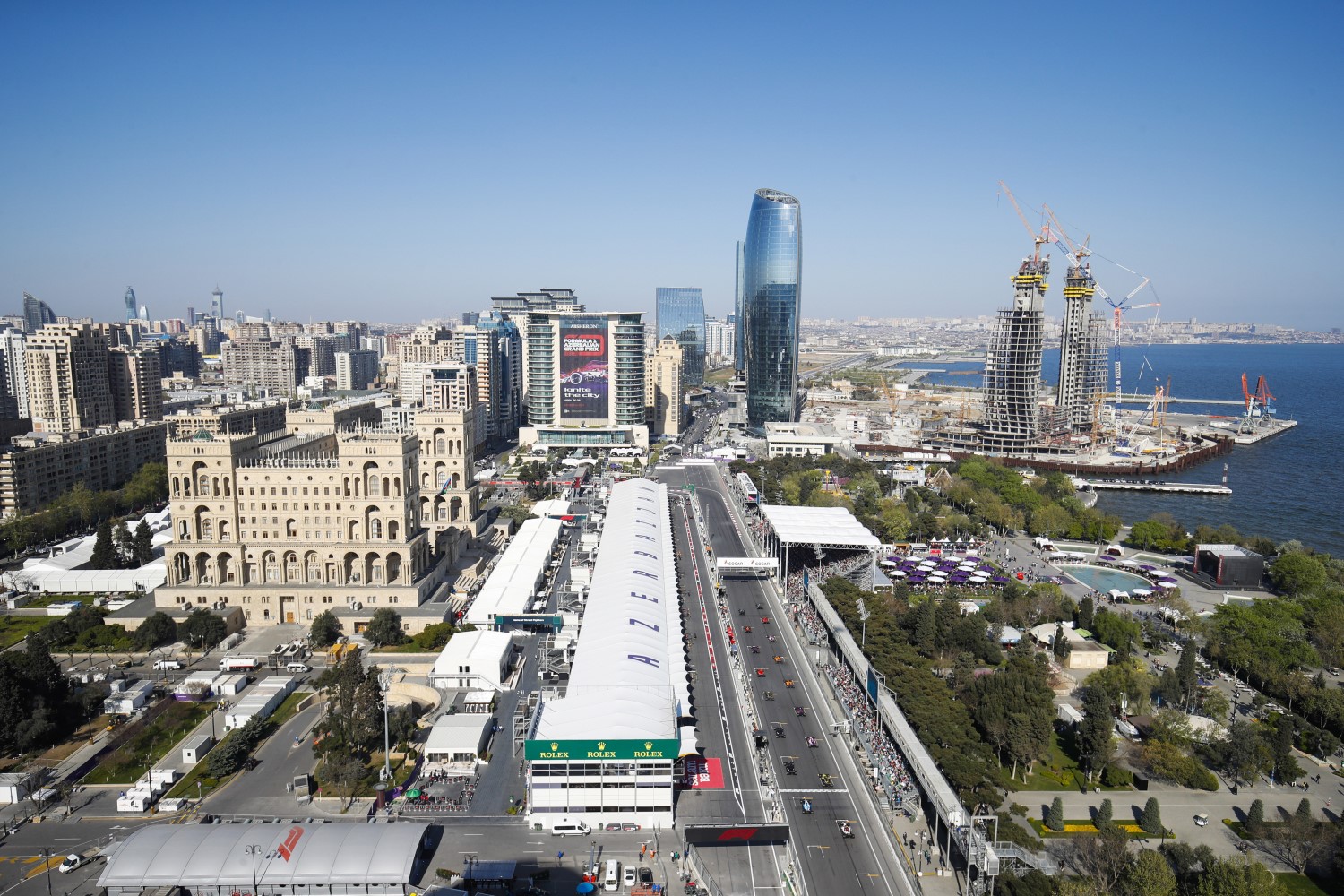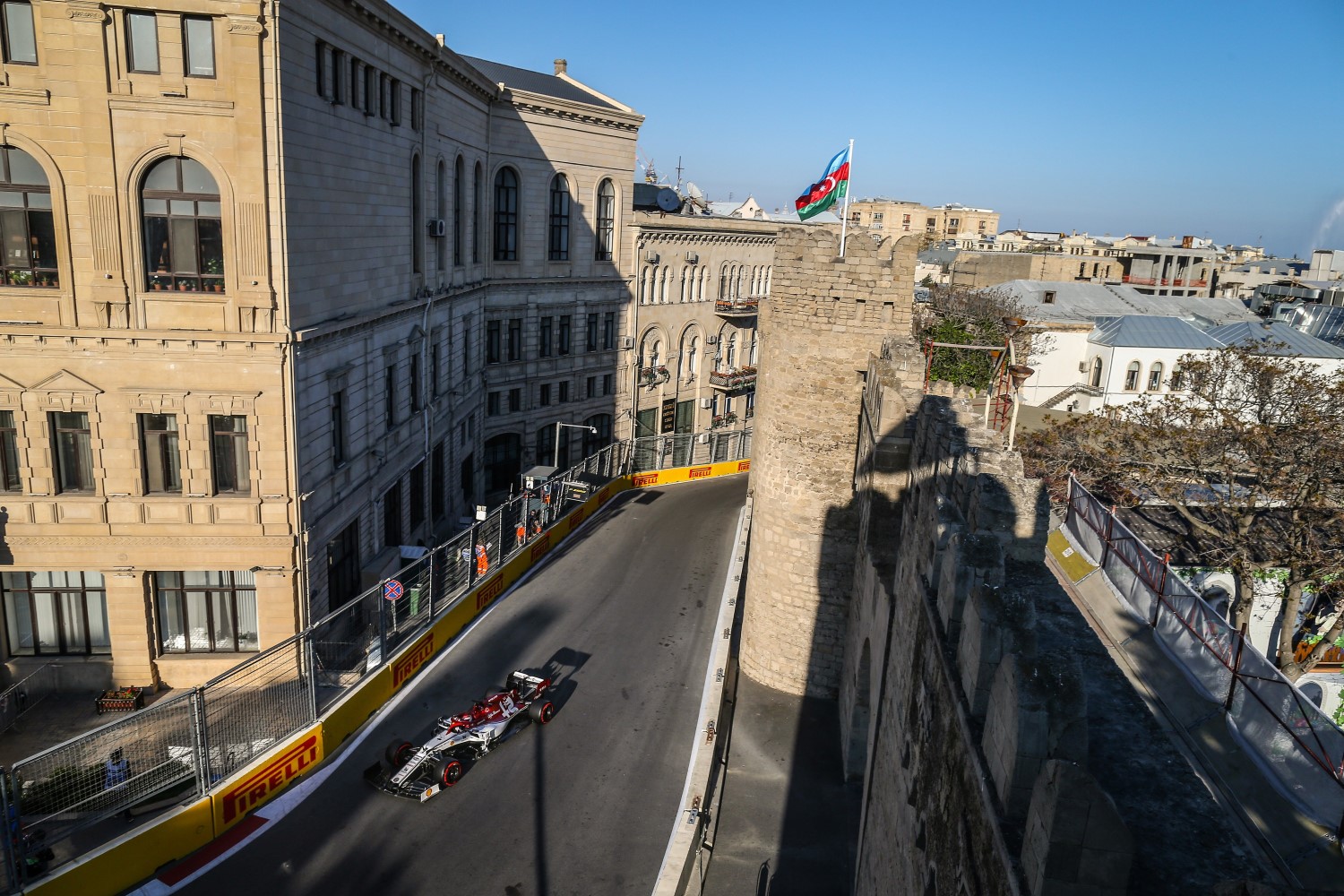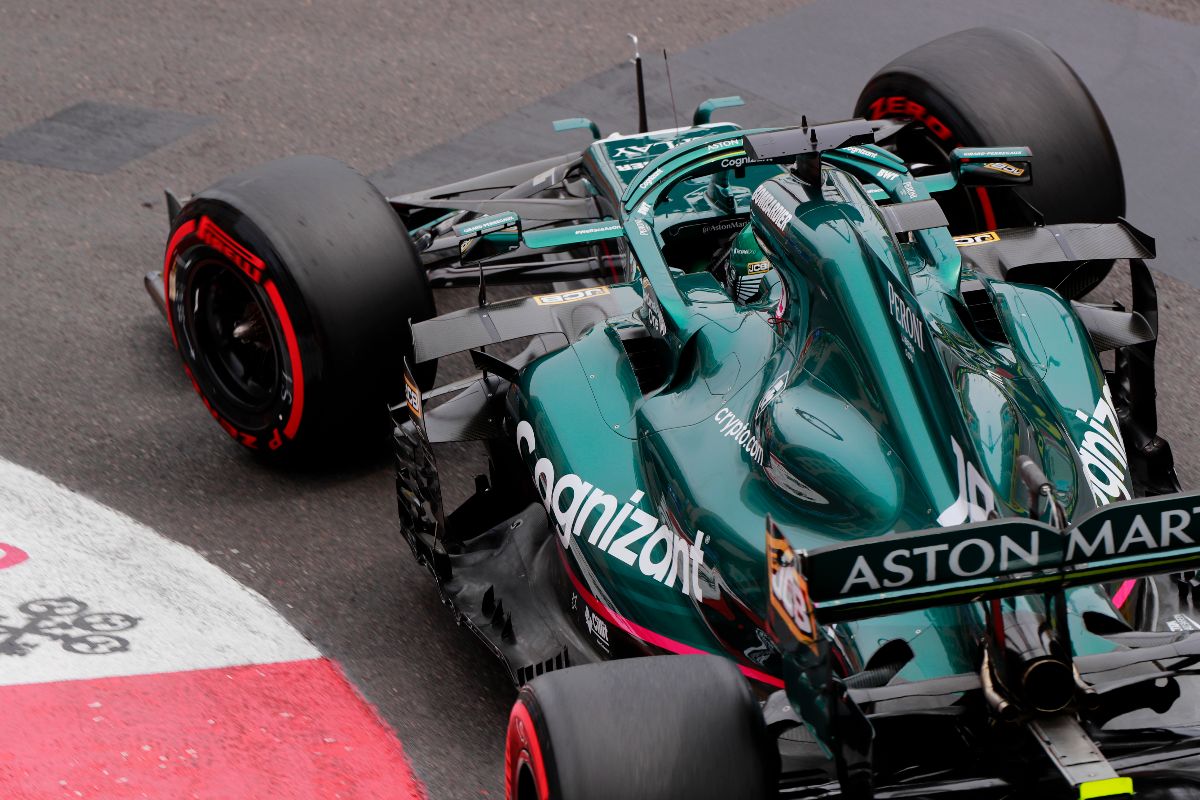Preview: 2021 Azerbaijan Grand Prix
The city of Baku blends history and modernity where West meets East alongside the inland Caspian Sea, which sits 28 meters below sea level. That makes Baku the lowest-lying capital city in the world, while it is also colloquially labelled ‘the city of winds’ for the frequently gusty conditions. Thousand-year-old preserved ruins sit alongside imposing Victorian and Soviet era architecture and futuristic glass-fronted skyscrapers, and it is fitting that Formula 1, a forward-thinking championship with a rich history, has found such a home in Azerbaijan’s capital.
Already, in just five years, the country has become a firm favorite of the Formula 1 paddock, which itself is set up directly in front of the imposing Government House on Freedom Square. ‘Land of Fire’ is the motto of Azerbaijan and Uralkali Haas F1 Team is ready to light up the city streets once more after the pandemic forced the cancellation of last year’s planned event.

The Baku City Circuit provides a stern test for teams and drivers alike owing to the variety of sections that make up the 6 km layout. The first sector comprises long straights, heavy braking points and 90-degree corners while the middle section takes drivers through the Old City, past its fortress walls, and includes the narrowest portion of a Formula 1 track all year, with Turn 8 just 7.6 meters wide.

A fast and flowing sector, including multiple blind corners, leads drivers back towards the Caspian Sea and along a full-throttle section that lasts almost two kilometers. That requires a delicate trade-off between aerodynamic dependency and straight-line prowess, working out how much of each to sacrifice in order to maximize potential.

Keys to the Race
The Azerbaijan Grand Prix punishes mistakes and stirs up unpredictability, keeping the pitwall on its toes as it reacts to events.
- Baku is an outlier for street circuits because track position isn’t essential, especially compared to the likes of Singapore and Monaco. The 2019 race had the fourth-highest amount of overtakes that season – 57 completed after the first lap, 49 (86%) of which were boosted by DRS.
- Overtaking is comparable to easy-to-pass Austria and Bahrain, so pit strategy is about the optimum, rather than reactionary. It’s roughly a 21-second time-loss in Baku, making it one of the quicker pit-visits on the calendar. The strategy is driven by tire degradation, and Pirelli has brought its softest and least durable range in the C3, C4 and C5. Expect one-stop races, but with early pit stops to remove the Soft tire in favor of a longer-lasting compound.
- The Safety Car has the potential to affect strategies because the likelihood of a mid-race interruption is high. The VSC has appeared in a quarter of all Azerbaijan Grands Prix, while the Safety Car has featured in 50%. Race interruptions could affect when a team pits or if it switches to a two-stopper in the hope of finding a fresh-tire advantage.
- The charge to Turn One is one of the most challenging race starts on the calendar. It’s just 170m from pole to Turn One, so there’s plenty to be gained and lost in a short run. A wider line into Turn One is preferred, keeping the car at speeds of over 120km/h (75mph) for a quick blast along a short straight.
- The lap begins to get technical from Turn Two. Drivers drop to 100 km/h (62mph), almost brushing the wall to maximize traction and exit speed. Over-aggressiveness can cause a driver to go straight on, losing significant time or damaging the car against the wall.
- The run to Turn Three includes the second DRS zone on the lap, making it a prime overtaking spot, ahead of a series of 90-degree turns. Turns Five and Six are challenging and run back-to-back, described as like a “roundabout” as drivers navigate at under 100km/h (62mph).
- Turn Seven is often a point of incidents as the circuit narrows, and drivers can clout the outside wall if they carry too much speed or attack the inside curb too aggressively.
Fact File
- One of the best ways to describe the layout of the Baku City Circuit is that it’s two tracks in one: half Monaco, half Monza. The twisty Old City section has a similar vibe to the streets of Monte Carlo, while the long straights and big braking zones are a characteristic it shares with the Italian Grand Prix venue.
- The unusual mix of traits in Baku makes setting up an F1 car a tricky balancing act. The ideal scenario would be the unachievable; a high-downforce car for the corners and very low downforce for the straights. So, often, teams have to find the compromise and opt for the medium-downforce configuration.
- From a mechanical perspective, one interesting challenge is finding the balance of heating your tires for Qualifying without cooking them in the race. This is actually a similar challenge to Portimão, so cars that performed well there, should expect to go well in Baku.
- Baku falls into the average range for lap time (64%) and lap distance (77%) spent at full throttle, but those figures are considerably more than any of the other traditional street circuits on the F1 schedule.
- The long lap and long straights at the Azerbaijan Grand Prix venue make it the busiest lap of the year for the gearbox, with drivers upshifting and downshifting gears 70 times! Singapore has the second most gear changes per lap, with 66.
- Baku has one of the highest braking energy levels of any F1 track, with eight braking zones registering over 2g. This is despite the circuit being one of only three tracks with zero heavy braking zones – which we define as generating over 4g, for more than 0.4 seconds.
- Most street circuits don’t tend to register the same level of maximum g-forces as traditional tracks and Baku is no different, with a max g-force of 3.8g at Turn 18 – one of the lowest max g-forces of the season, and the track also has the lowest average of the season for lateral g-force across the lap.
- Because of these lower forces, it isn’t a demanding race physically for the drivers, as there is less strain on their neck. There are also more straights for them to do switch changes and there is a bit more margin for error with the barriers, so it is less mentally demanding too.
- The average steer angle in Baku is very low, compared to other circuits on the calendar like Silverstone and Barcelona, meaning the corners are very short. This doesn’t put much energy into the tires, which is why warming them up can prove challenging.
- Because the corners don’t generate as much energy as other tracks, teams are more dependent on brake heat to keep the tires warm. However, because of this, the softer tire compounds are more sensitive to overheating and breaking apart, so it’s a tough balance to find between keeping the tires warm and not overheating them.
- Most street tracks also tend to register fairly low maximum speeds, but that definitely is not the case in Baku… the cars can reach speeds of up to 331 km/h at the end of the start/finish straight, the fifth highest figure of the season.
- Overtakes are notoriously difficult to execute on street circuits. Not Baku – the 2019 Azerbaijan Grand Prix contained one of the highest numbers of ‘normal’ overtakes (non-DRS assisted) as any race that year, with 37.
- A Safety Car isn’t uncommon in Baku. Two of the last four races have included Safety Cars, with five total deployments. And it’s one of the toughest Safety Car restarts of the year, because of the long main straight and the fact the start/finish line is at the very far end of it. Go too soon and you’ll get slipstreamed, go too late and the field could be much more bunched up behind you, opening up the risks of being overtaken.
- The section of track from the exit of Turn 16 to the braking zone for Turn 1 in Baku is the longest flat-out section of track on the F1 calendar. It’s around 200 meters longer than the Turn 1 to Turn 5 stretch at Spa-Francorchamps.
Pirelli Tires
- The softest tires in the Pirelli Formula 1 range have been selected at the Azerbaijan Grand Prix for the first time: C3 as the P Zero White hard, C4 as the P Zero Yellow medium, and C5 as the P Zero Red soft. Notably, this is a step softer than 2019 (the last time that the race was run) and the same nomination as Monaco.
- This choice has been made in order to introduce an extra strategic element: last time, the hard compound wasn’t used at all during the race. Going a step softer now brings the hard choice into play and encourages more variety in the strategies.
- The track surface on the Baku street circuit is one of the less aggressive in terms of asphalt roughness and does not take a lot of energy out of the tires, making the softest compounds in the range an optimal choice.
- Baku has been described by drivers in the past as having the complexity of Monaco with the speed of Monza. While this isn’t precisely the case, it gives a good insight into the nature of the fastest and longest street circuit on the calendar from a driver’s perspective.
- Aside from that, Baku has all the characteristics expected from a street circuit: a ‘green’ and slippery surface that is likely to evolve quickly, especially as it has not been used for two years. The barriers are unforgiving and it’s also extremely narrow at one point (Turn 9): all of which elevates the likelihood of a safety car, obviously affecting race strategy in turn.
- The winning strategy last time was a one-stop soft-medium, used by the top four. Charles Leclerc finished fifth for Ferrari by doing the opposite: medium to soft (plus a second late stop for more softs to set the fastest lap). There was quite a wide pit stop window, with some long stints seen on the medium C3 tire (now the hard for this year’s race) in particular.
- Baku is nicknamed the ‘city of winds’ due to its frequent and variable windy weather. This obviously affects aerodynamic balance on what is already a tricky track in terms of set-up.

